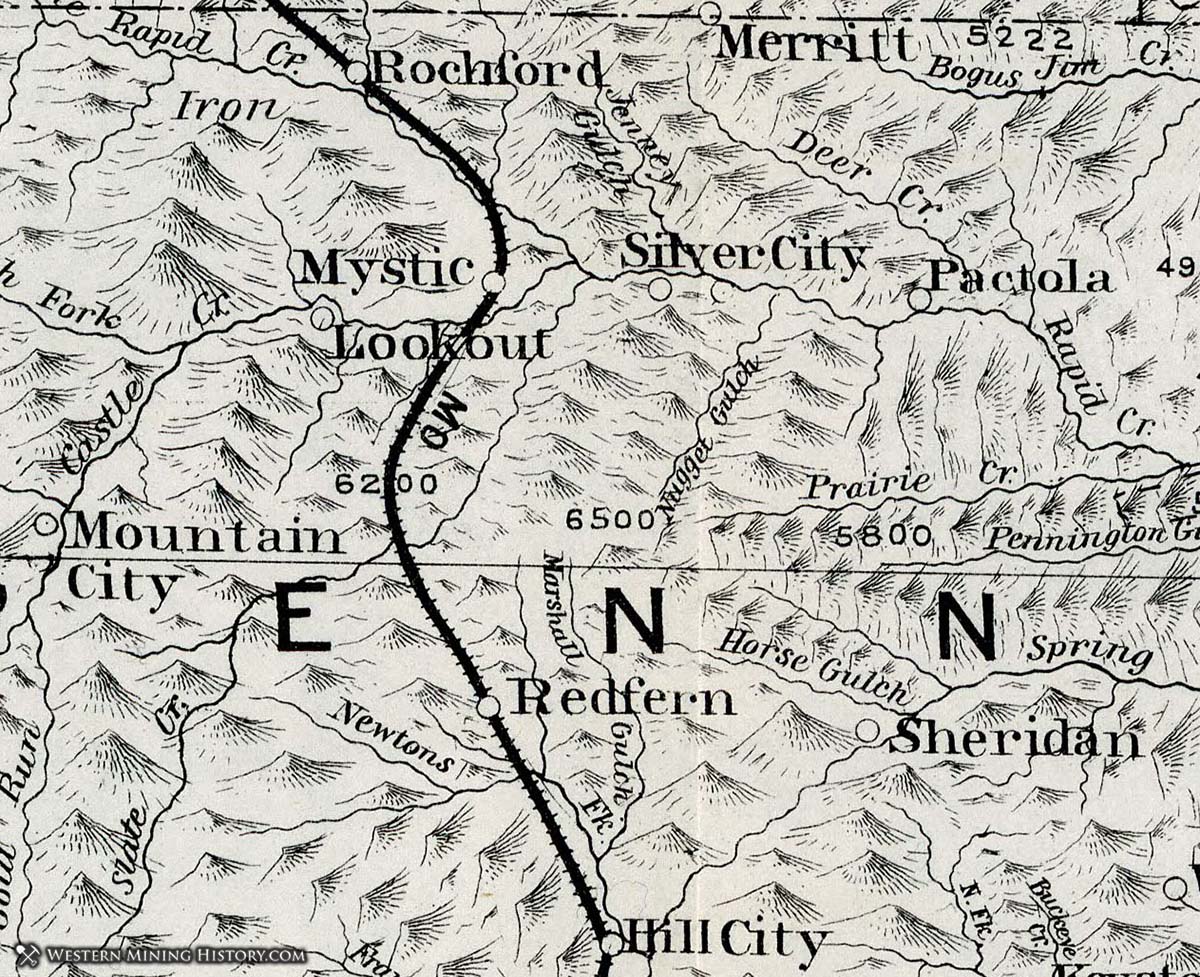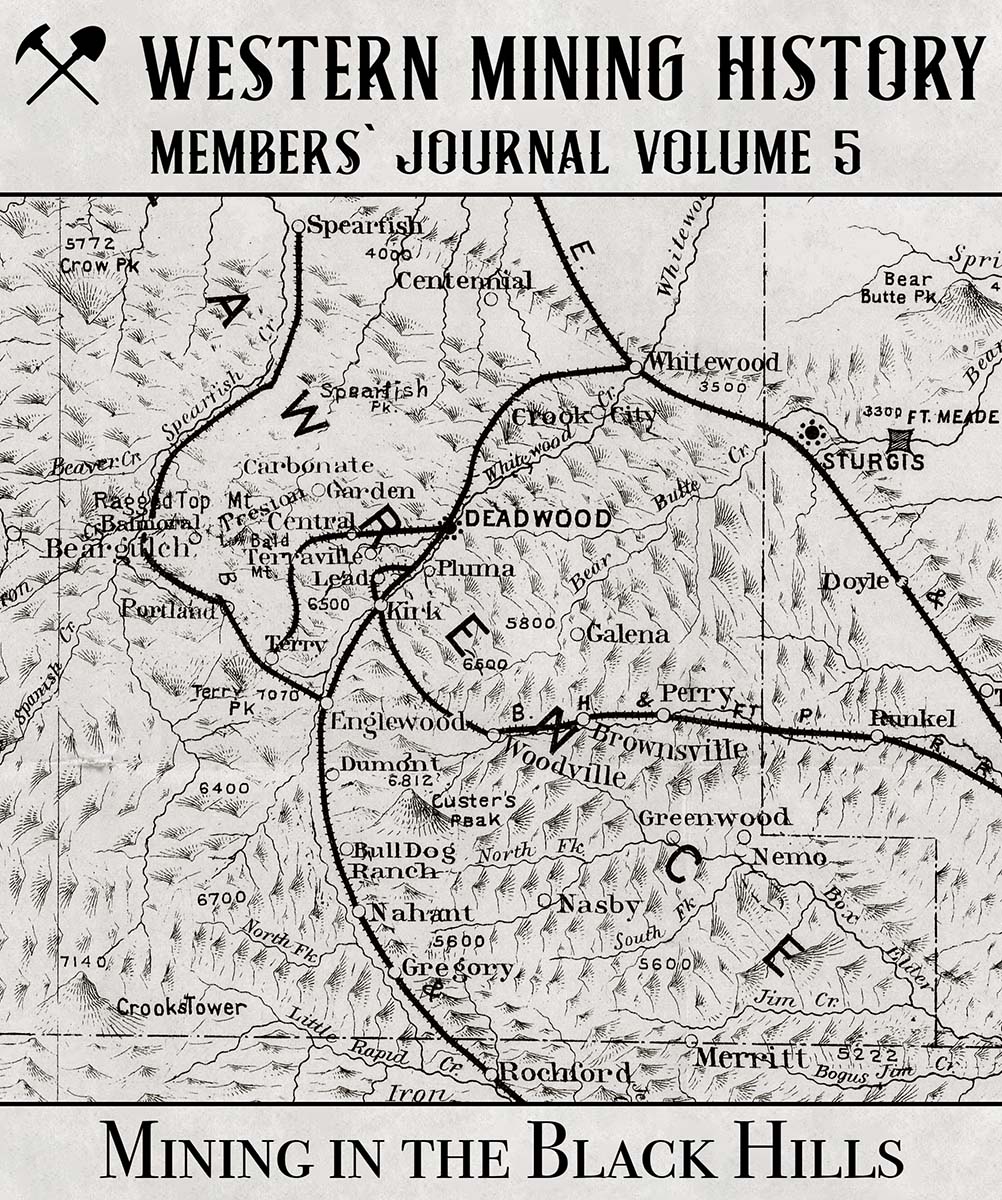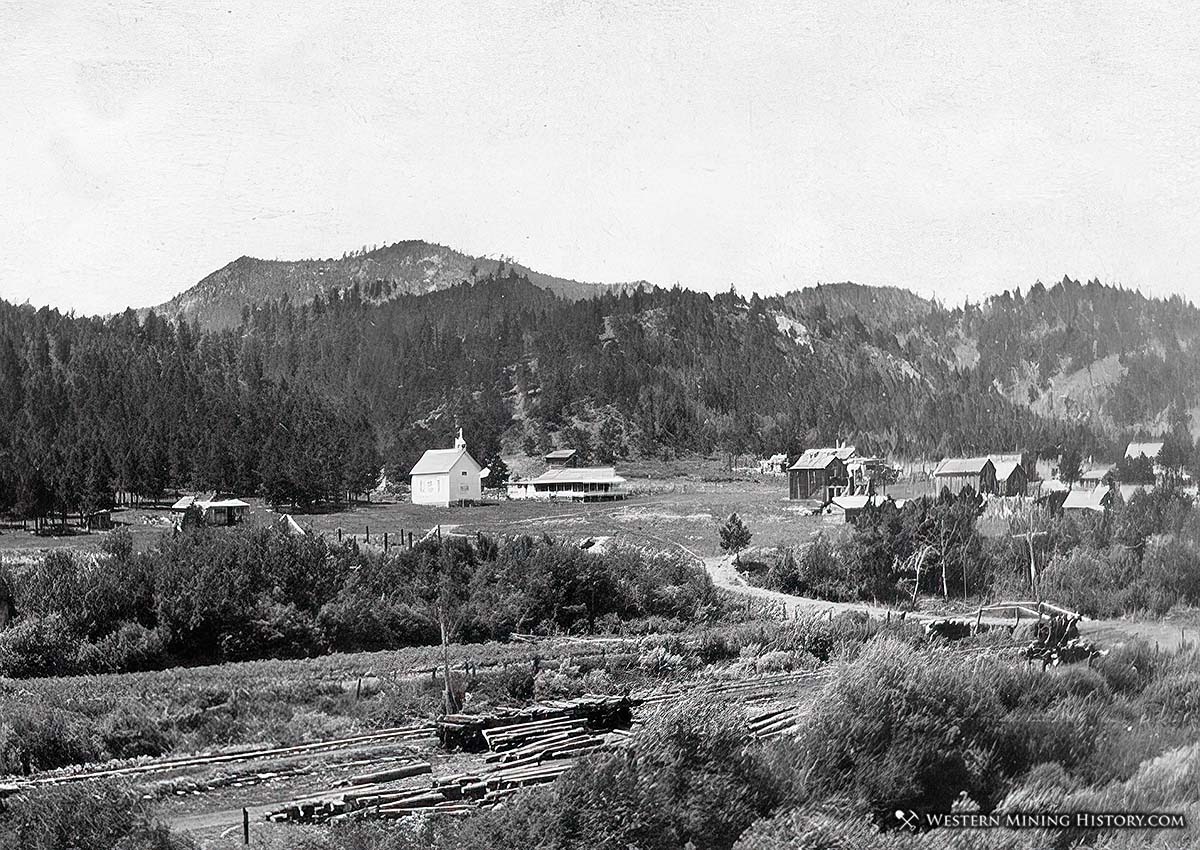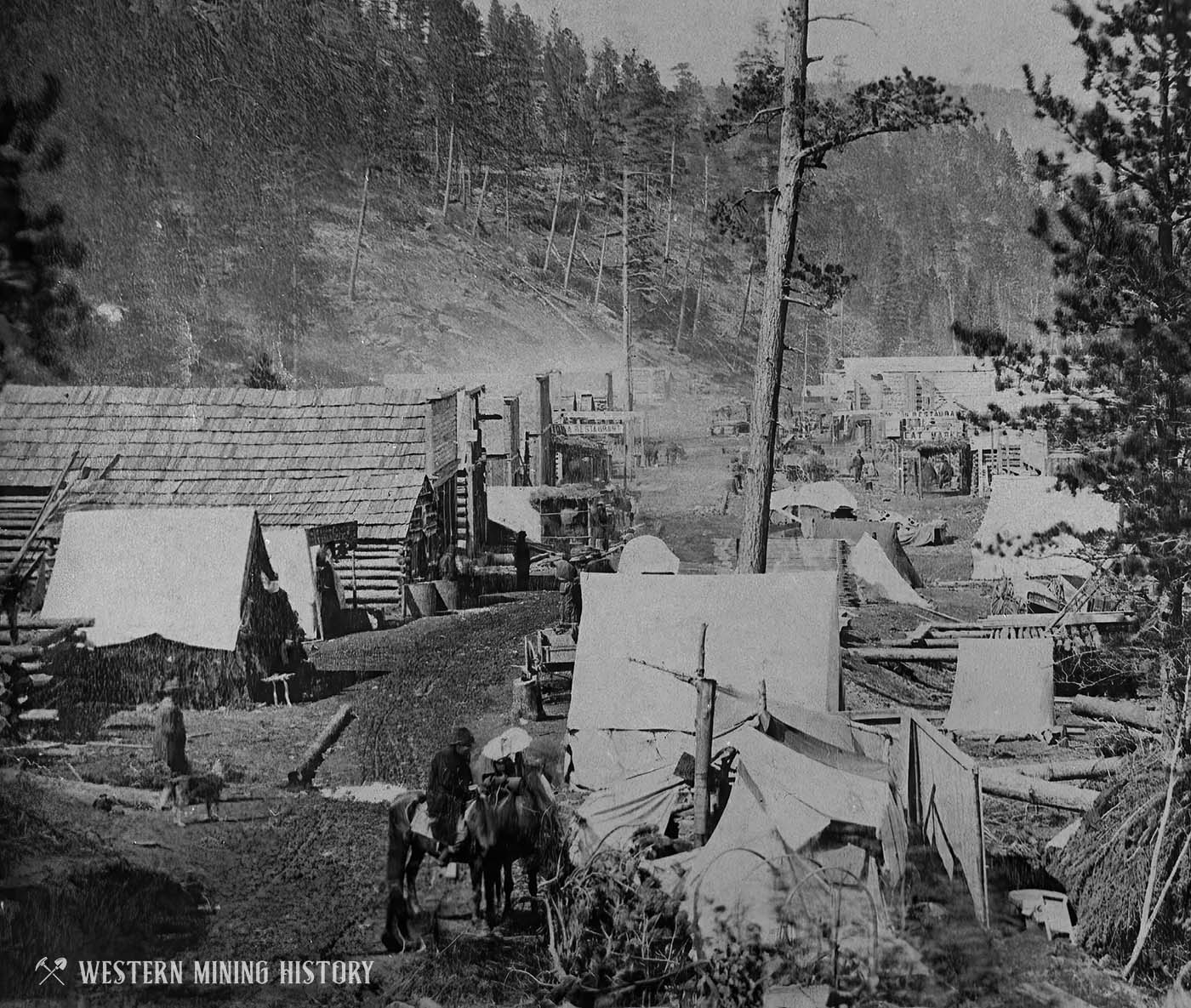Silver City History
Mines were first located at Silver City in 1876. The settlement that formed here was named after some of the West's greatest mining centers at the time, as towns named Silver City in Idaho, Nevada, and New Mexico were all famous in the 1870s. However, this iteration of Silver City never amounted to more than a minor mining community that had more periods of stagnation than prosperity.
The March 25, 1878 edition of The Black Hills Daily Times mentions the Silver City district:
Wm. Mosher, the Lee street shoemaker returned from a visit to the Rapid creek country last evening. He represents the section about Silver City as picking up. The mines are prospecting well and the inhabitants feeling in good spirits in anticipation of a prosperous season and many big strikes. This district, like all new camps, lacks capital to develop its resources. The leads are all in hard, solid white quartz, and it requires time and money to open them.
Silver City is a new town about four miles above Pactola, on Rapid creek. It contains a population of between forty and fifty miners, who are developing the mines in that section. There is no snow in that valley. The roads and hill sides are dry and dusty, and the flats along the stream are green.

Very little has been written about Silver City, so it must be assumed that the town was of little importance for most of its history. In the early years, much of the activity here centered on the Dianna Mine. In 1916 there was a surge in activity here centered on the Home Lode, which put Silver City back in the news for a brief period.
An important factor in Silver City's longevity was its location on the Crouch Line of the Rapid City, Black Hills and Western Railroad, which operated until 1946.
Although Silver City did not compare to the grand mining centers in other states that shared its name, it did manage to outlast many Black Hills mining towns, managing to keep a post office until 1964. Today it remains as a small resort community near Pactola Lake.
Shooting Scrape at Silver City Close Shave
The following article appeared in the May 28, 1916 edition of the Rapid City Journal.
Ed Tuttle of Silver City, is in the county jail awaiting a hearing to be held Monday morning, as the result of a complaint sworn out by L. A. Richards, general manager of the Home Lode Mining Company, charging Tuttle with shooting at Mr. Richards. The following are the facts as narrated by Mr. Richards and borne out by several eye-witnesses, among whom are Ed Wilson, James Murray, Robt. Carley and John Barker.
Mr. Richards was about ten feet from the door of the Silver City store, waiting for the Black Hills & Western train on which he intended to come to this city, about 11:30 in the morning. Tuttle, who had been drinking heavily for some time past, and who has been nursing an old grudge over a contract made some eight or ten years ago, came out of the store and walked up to Mr. Richards, with the question:
"Well, what is going to be done about that contract?"
"There's absolutely nothing to it" was the response.
"We'll see about that," exclaimed Tuttle, at the same time drawing a 32 automatic Colt from his hip pocket.
At the sight of the gun, Mr. Richards closed with Tuttle, seizing his gun hand, in an attempt to disarm him. Tuttle was holding the gun in his right, and in the scuffle threw his left arm around Richards' neck, and pressed the muzzle of the gun against Richards' stomach. Richards succeeded in knocking the weapon up just as Tuttle pressed the trigger, and the bullet cut the collar from Richards' neck, without breaking the skin, but passed on into Tuttle's own left wrist.
At that, Richards knocked his antagonist down, and was pulled down with him, managing, however, to pin the gun hand down on the ground and hold it there in spite of all of Tuttle's efforts to move it into line for another shot. All this had occurred so quickly that none of the bystanders had time to interfere, but now James Murray stepped up and wrenched the gun out of Tuttle's hand. Tuttle got up, exclaiming:
"Well, I got you, you ______"
"You didn't get me, but you got yourself," was the rejoinder, and now for the first time Tuttle noticed his own wound. Mr. Richards phoned to the sheriff who deputized a Mr. Tarbox by phone to bring Tuttle in to town, and the latter came willingly enough, thinking that he was merely to be put under the care of a surgeon, and that the assault was to be overlooked.
Sheriff Baken met the train, which came in two hours late, and took Tuttle down to the county jail where his wound was dressed. Mr. Richards appeared before Justice Mintener and swore out a complaint, and Tuttle will be brought up for a hearing Monday morning at nine o'clock.
The bystanders all agree that only Mr. Richards' prompt action and a little good fortune saved him from death, as Tuttle's intent was all too evident, and the margin by which the bullet missed was scarcely a hair's breadth. Mr. Richards' coat collar bears witness to the closeness of his escape.
Since the shooting it developed that Tuttle has been making threats, for some two months, but the assault itself was the first intimation Mr. Richards had of Tuttle's intentions.
Mining in the Black Hills

Western Mining History Member's Journal Volume 5: "Mining in the Black Hills", takes a closer look at the distribution of mining districts and towns the Black Hills of South Dakota.
Deadwood: The Ultimate Photo Collection
The Black Hills Gold Rush was one of the most significant historical events in the western United States. Deadwood: The Ultimate Photo Collection contains over 50 images capturing the early history of this famous gold region.

